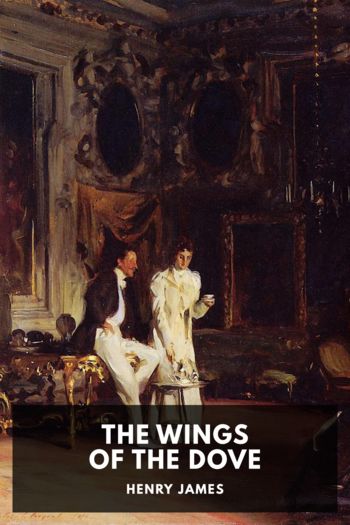Da Vinci's Bicycle - Guy Davenport (e novels to read TXT) 📗

- Author: Guy Davenport
Book online «Da Vinci's Bicycle - Guy Davenport (e novels to read TXT) 📗». Author Guy Davenport
When the summer is green with grasshoppers and yellow with wasps, the shining Tagus slips under its arched bridges around the three sides of Toledo. The house where photography was invented sits on a Roman base, its walls are Celtiberian, its windows Arab, but its rooms, for all their Moorish tiles, holy cards, and paralytic furniture from the age of Lope and the hidalgos, are bravely modern.
Édouard Manet visited this house on his trip to Spain during which he almost starved owing to an inability to force a bite of Spanish cooking upon his Parisian palate. In fact, he called onto the field of honor a man who asked for a second helping of a dish that he found particularly revolting. Manet assumed that the man was offering him a deliberate insult.
A radio that looks like a French cake with dials comes on at dusk when the powerhouse sends a thrill of electricity through all the wires of the city and small orange bulbs light up in pink glass shades and the radio sizzles The March of the Toreadors, a talk by a priest on the oneness of our spiritual and political duties, a lecture by a Major Domo of Opus Dei on the plague of heresies that besets the French, and a piano recital by Joaquin Turina, playing furiously into a microphone in Madrid that looks like a Turkish medal worn only by field marshals who can claim collateral descent from the Prophet.
There is a room off to the side of the house where photography was invented where you can look into a microscope and see cheesemites doing the act of nature if you are lucky. Some are of the opinion that this imperils one’s soul, and others, more enlightened, maintain that it is educational.
— It is so French, you will hear.
— It is Darwinian, you will also hear.
— The Pope has given his blessing to photography. A maiden can send her photograph to her swain and thus spare herself the indecency of a personal encounter. You can go to the photographer’s studio and choose a picture that most resembles your son who has gone to the front and have a likeness to put on his grave when the government sends his body home on the railway.
El Caudillo has sat for his portrait many times.
All the world loves a big gleaming jelly.
Napoleon as he was consummating his marriage to Joséphine was bitten in the butt by her faithful dog at, as he liked to relate to intimate friends, the worst possible moment. Real life, said Remy de Gourmont, makes miserable literature, and even Balzac would not have known what to do with such an unmanageable a detail. It is simply appalling. But real life is all that photography has.
Betún y Espliego in the course of compiling his monumental history of photography sifted through thousands and thousands of tintypes and daguerreotypes to find the patterns of attention and curiosity into which this new art fell. He reproduces in his work a photograph of a man standing on a Berlin sidewalk with Einstein. Einstein didn’t know the man from Adam’s off ox. The man had stopped Einstein and asked permission to be photographed beside him on a Berlin sidewalk.
— It is, Einstein conceded, a simple enough request.
A photograph of Lenin reading Iskra at a Zürich café accidentally includes over to the left James and Nora Joyce haggling with a taxi driver about the fare. A Philadelphia photographer made several plates of paleolithic horse fossils at the Museum of Natural History. In one of the pictures two gentlemen stand in the background, spectators at the museum. One wears a top hat and looks with neurotic intelligence at the camera. He is Edgar Allan Poe. The other gentleman is cross-eyed and wears a beret. God knows who he is.
Betún y Espliego, at the time of his degree from the Sorbonne, explained in a lecture that for the first time in the history of art the accidental became the controlling iconography of a representation of the world.
There are no photographs of Van Gogh as a grown man except of the back of his head. This image occurs in a photograph of a man of some importance now forgotten. But we can identify the figure with its back to the camera as Van Gogh.
There is a photograph of the ten-year-old Vincent. Picasso says that there is a strong resemblance to Rimbaud. A classmate of Vincent’s who survived to a great age remembers his hundred freckles across the cheeks and nose, and that the color of his curly hair was bright carrot. Note, says Betún y Espliego, how the accuracy of the photograph had in this instance to be supplemented by an old man’s memory.
When the photograph was invented in Toledo the Indians came into town and sat for their portraits. It was the only interesting thing the white man had come up with in all these years.
A photograph of Socrates and his circle would simply look like an ugly old man with bushy eyebrows and the lips of a frog. The homespun texture of his wrinkled tunic would probably be the most eloquent part of the photograph, as the eyes





Comments (0)